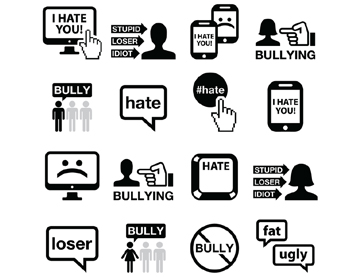Banner Image

Some activities for creating a healthy classroom culture.
“Sticks and stones will break my bones / But words will really hurt me.”
I was playing with my 3-year-old granddaughter and called her a silly goose. She freaked out—crying, yelling, and telling me she hated me. It took a long time to cool her down and explain that being a silly goose was not a bad thing. This anecdote raises important questions about the nature of hate speech. Who decides what is hate speech, the speaker or the recipient? What’s the difference between teasing, sarcasm, insulting, and hate speech?
These questions show us why hate speech is so difficult to stop. Hate speech is hard to define, and it’s easy to be confused about the motives of the speaker. But there’s a cultural piece that adds to the challenges. If we’re going to get to the heart of hate speech in America today, we must remember that significant elements of our cultural history were built on inequity—from the founding of the country and displacement of indigenous populations to the Civil War and slavery. This inequity has bred a history of demonization of the “other.” Hate speech is just one manifestation of this dynamic.
It’s important for us to understand the depth of these challenges; hate speech won’t just go away if we don’t examine the underlying causes. I’ve spent many years in the classroom working on these issues with students. Below are some activities I’ve used to reduce or eliminate hate speech in my classroom.
5 Reasons Students Use Hate Speech
Let’s start by examining why students use hate speech. Here are a few of the more common ones:
- To express bigotry and racism
- To express their own internal anger and unresolved pain
- To feel superior
- To feel powerful when they feel powerless in other areas of their lives
- To show off for friends
With these reasons in mind, there are specific activities we can use to engage students in deeper reflection and eliminate hate speech in the classroom. These are the steps I recommend for teachers, refining them for students’ age and grade level.
Ideas for Curbing Hate Speech
- Establish a classroom value that all cultures are to be respected. With the students’ help, make a list of behavioral rules that promote this value. Examples include “Do not use language that hurts another student’s feelings” and “No one’s culture can be verbally attacked.” Once the list of rules is complete, develop with your students a protocol for how these rules will be enforced.
- Build class empathy. Having ensured that your class is a safe space, ask your students if any of them have been victims of hate speech. If they’re willing, let these students share with the rest of the class how it felt to hear hateful language. Have a class discussion for students to share how they felt hearing these stories from their classmates.
- Analyze hate speech. In small groups, invite students to get curious and deepen their understanding of where hate speech comes from, what it is and isn’t. You can assign each group to answer questions like:
- Who decides what is hate speech: the speaker or the recipient?
- What is the difference between teasing, sarcasm, insulting, and hate speech?
- Does the intention of the speaker matter?
- Is all hate speech the same? How subjective is hate speech?
- Is stereotyping the same as hating?
- Does a victim of hate speech have the right to use it to fight back?
Have each group lead a discussion about their topic. Once all of these discussions are finished, develop a class definition of hate speech, including how it differs from other kinds of hurtful talk.
A Deeper Dive Into Hate Speech
Looking at the list of five reasons that students use hate speech above, brainstorm with your class what’s good and what’s bad about each of these reasons.
- What’s good about expressing bigotry and racism? What’s bad about it?
- What’s good about expressing anger or pain with hate speech? What’s bad about it?
- Is using hate speech a good or bad way to feel superior?
- Is using hate speech a good or bad way to feel powerful?
- What good about using hate speech to show off for friends? What’s bad about it?
While “good” and “bad” may sound oversimplified, I have used this activity many times in my classroom, and have found that, by examining what’s good about hate speech, you can uncover motivation. This is very powerful because it can help shed light on the source of the feelings that are at the root of the hate. In this activity, you can share the idea that sometimes good reasons lead to bad decisions, and use these discussions to have students develop different ways to express themselves. By speaking of the good and bad in hate speech, you give students the chance to examine their own feelings, notice their impact on others, and evaluate their decisions.
Spreading the Word
Once the class has confronted what hate speech is, seen firsthand why it’s damaging, and taken steps to stop it in their classroom, see if students can find a series of ways to prevent or attack the use of hate speech in their larger community circles. It’s only when we do our work as individuals that our larger social fabric can be safer and stronger for all.
Source https://www.edutopia.org/blog - Dr. Richard Curwin
